Raise your hand if you watch the annual Oscar awards primarily for the fashion show, not for the movie prizes. If so, you are not alone. Each year the Oscars provide an excuse for an outdoor runway show featuring the world’s favorite actors doing the modeling. (Female actors, of course; male fashion at the Oscars is predictable and a little boring and no one talks about it.) So, to mark this year’s Oscars we feature Top Ten moments in women’s fashion history.
1. Empire Waist
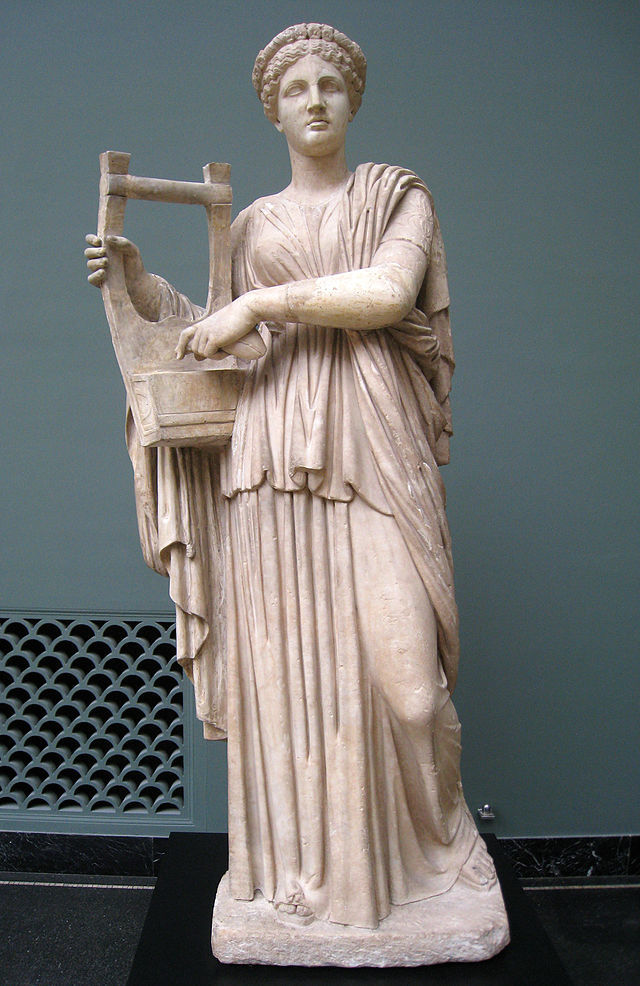 |
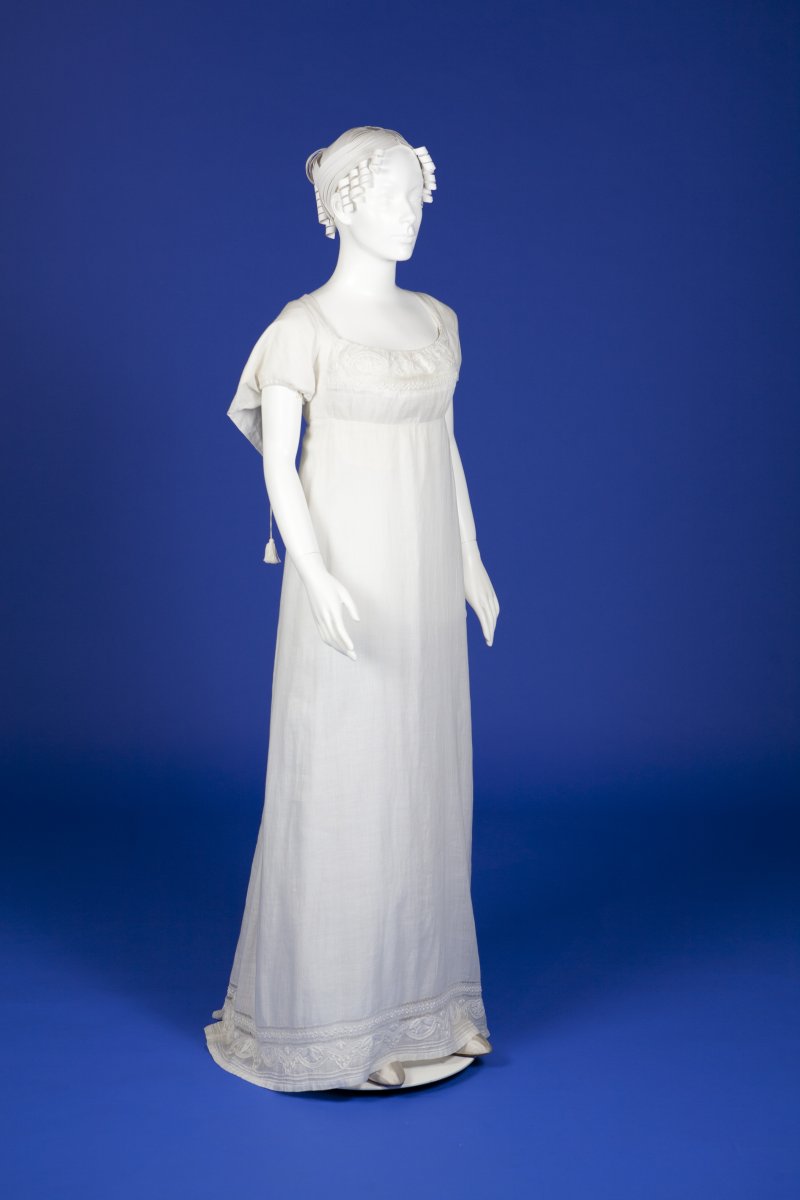 |
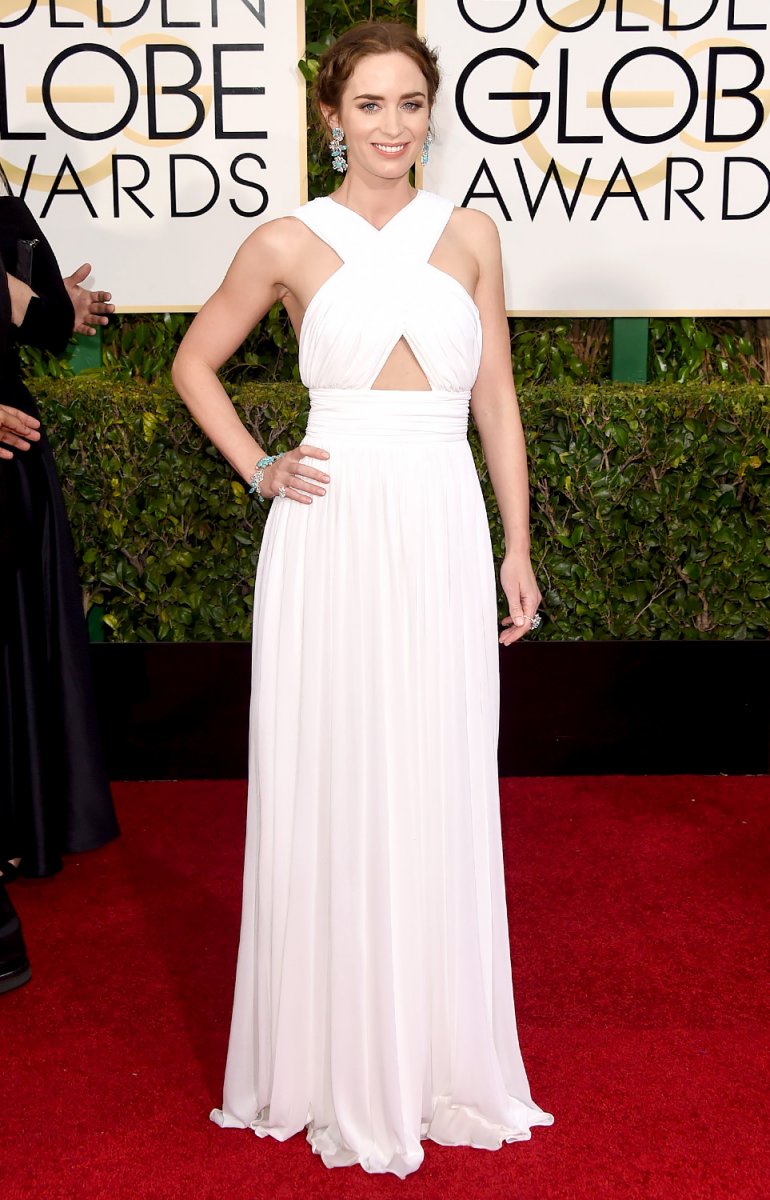 |
| All image captions read from left to right: Marble statue of Erato from Monte Calvo in Italy; 1800-1809 White cotton dress; Emily Blunt at the 2015 Golden Globes | ||
The ancient Roman cities of Herculaneum and Pompeii were rediscovered in 1738 and 1748 fueling an interest in the classical world. Coupled with the democratic ideals of the 1789 French Revolution, interest in the ancient world led to the development of a new narrow fashion silhouette that mimicked the look of women in ancient statuary. This style was popular throughout the First French Empire, 1804-1814, causing the high waistline under the bust to be referred to as an “empire” waist. High waists, one shoulder necklines and pleated or draped narrow silhouettes have been revived many times throughout the centuries and remain a classic silhouette.
2. The Crinoline (1850s-1860s)
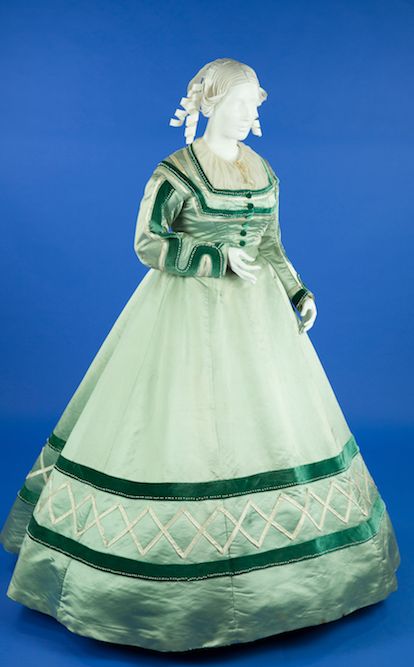 |
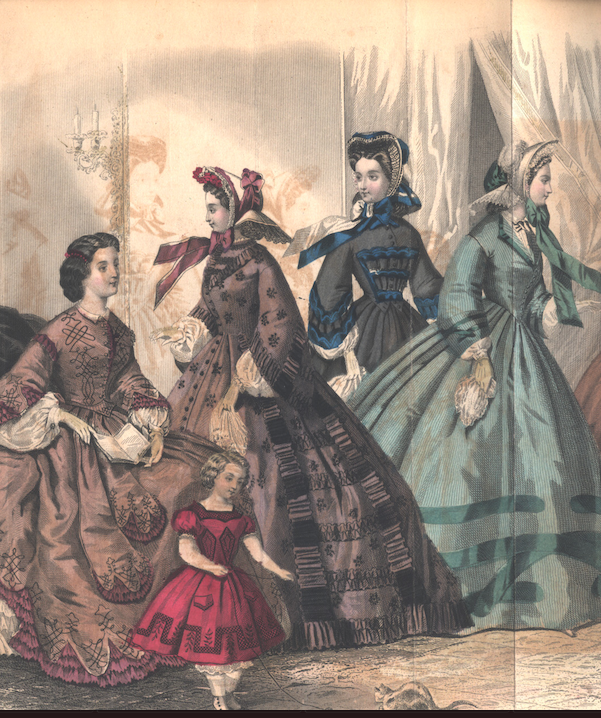 |
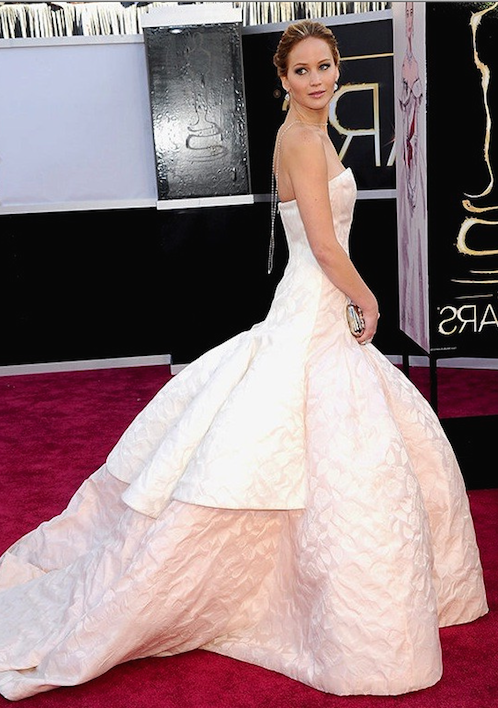 |
| 1863-1869 Aqua silk dress; Godey’s Lady’s Book Fashion Plate, February 1863; Jennifer Lawrence at the 2013 Academy Awards | ||
The crinoline period of the nineteenth century has heavily influenced formal evening fashion in the 150 years or so since it emerged. “Crinoline” refers to the structural hoop undergarment that replaced the need for multiple petticoats to achieve the wide, bell-like shape of the dress. This period also saw the debut of widespread fashion magazines, which allowed styles to be communicated quickly to the masses. For example, Godey’s Lady’s Book began publication in 1830 and by the 1860s it had a circulation of 150,000. Revived in the 1950s and 1980s, this style remains a classic for formal evening occasions.
3. Bustle
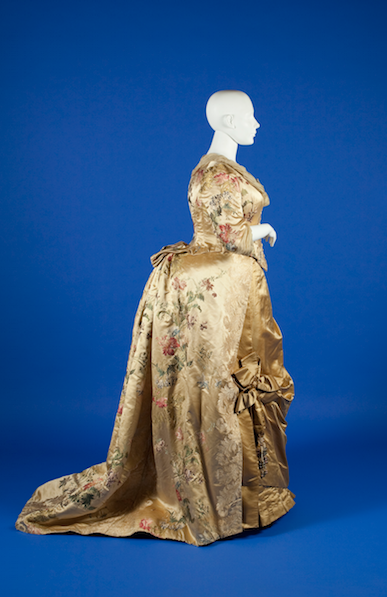 |
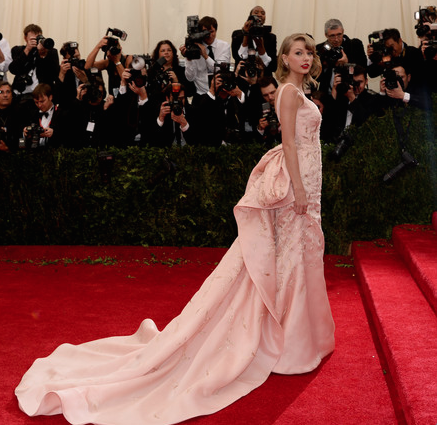 |
||
| 1880-1889 Yellow silk Charles Frederick Worth evening gown; Taylor Swift at the 2014 Costume Institute Gala at the Metropolitan Museum of Art | |||
Charles Frederick Worth, considered the grandfather of haute couture fashion, established the first couturier business in Paris in 1857. Worth was the first to put his name on his designs, akin to artists signing paintings. Pictured above is a Worth gown from 1884, featuring a bustle, an extremely popular style from 1870-1885. Bustle style gowns have the fullness of the dress gathered up and piled over the backside, often supported by a metal “cage,” padding, or stiffened fabric. While the bustle has never reclaimed its popularity for day wear, it remains a popular choice for evening wear and wedding gowns.
4. Flapper Style
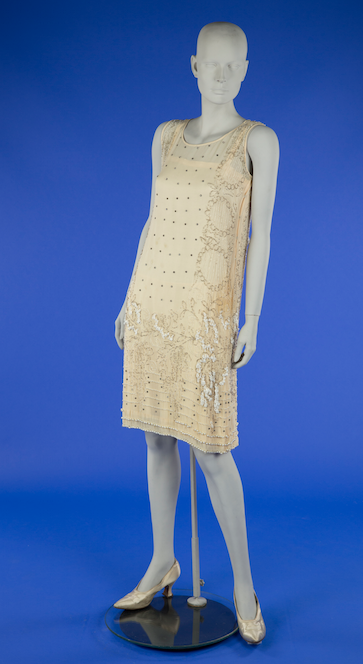 |
 |
| 1925 White silk, beaded wedding dress; Emma Stone at the Magic in the Moonlight premiere, 2014 | |
World War I changed fashions dramatically. The young generation that survived it did not want to return to a stiff societal structure from which they had broken free, and that freedom was reflected in dress. Rigidly constructed gowns and multiple undergarments of previous eras gave way to loose fitting dresses with no waist definition and ever-rising hemlines. No longer cut to fit the curve of the female body, dresses had become rectangles of fabric reflecting the flattened planes of cubism. The looser styles allowed for easy movement, often accentuated with fringe trim, when dancing the lively dances of the Jazz Age.
5. Body Consciousness
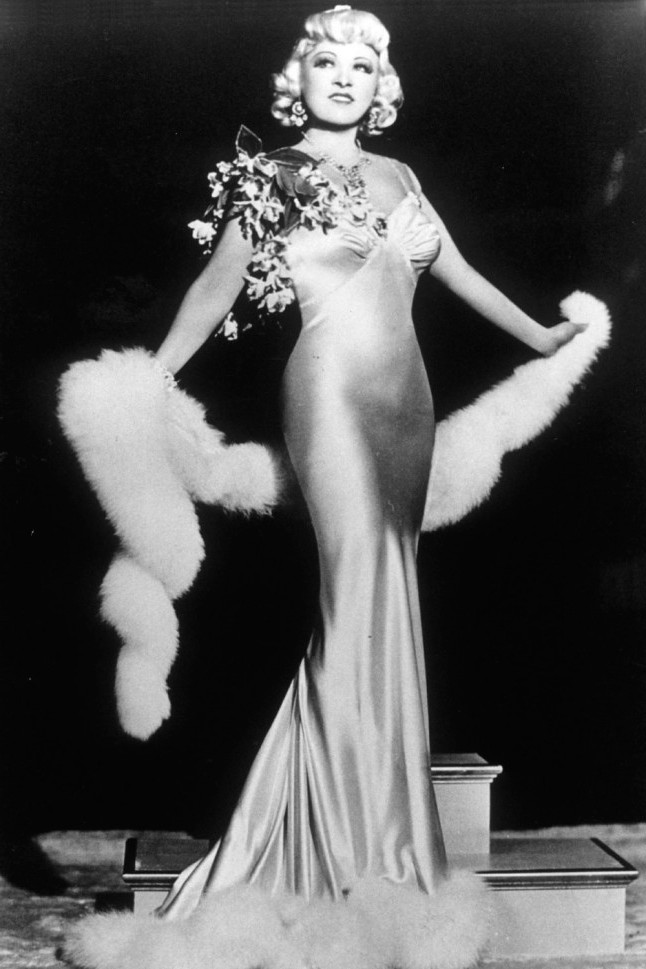 |
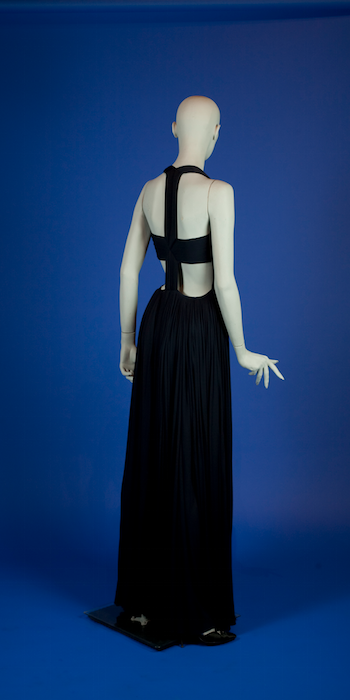 |
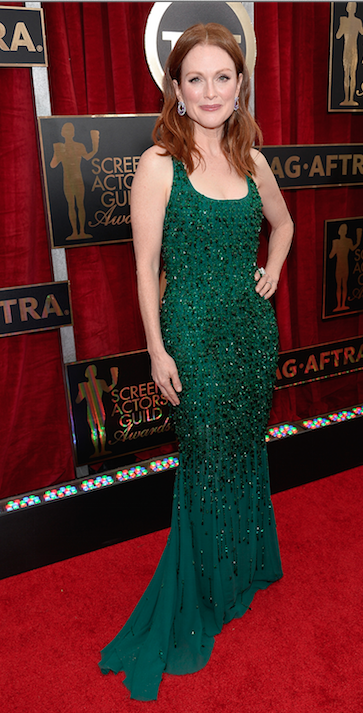 |
| Mae West; Madame Grès evening gown, 1975; Julianne Moore at the 2015 Screen Actors Guild Awards | ||
Loose-fitting styles of the 1920s evolved into closer-fitting body-conscious styles of the 1930s. Knit fabrics were used primarily for underwear at this time, and Lycra spandex would not arrive until the 1960s, so in order to get fabric to cling to the body, designers draped it on the diagonal ‘grain’ of the fabric, which has the most stretch. Bathing suits with low-cut backs and a penchant for showing off one’s tan in the 1930s also resulted in gowns with low-cut backs. Body-hugging styles were first seen in Medieval gowns and were later revived in 1970s nostalgia for the 1930s.
6. Broad Shoulders
 |
 |
 |
| 1890s grey silk dress; Joan Crawford in Mildred Pierce, 1945; Julie Bowen at the 2014 Golden Globe Awards | ||
Broad shoulder silhouettes cycle through fashion history beginning with Henry VIII, and women’s styles certainly get their influence from menswear in this regard. Large “leg-of-mutton” sleeves adorned dresses in the 1830s and 1890s, and were revived in the 20th century by MGM film designer Gilbert Adrian when he created costumes for Joan Crawford. Crawford had naturally broad shoulders, and Adrian simply capitalized on them. During this period, Europe and America were fighting World War II, and fashion was greatly influenced by the broad shoulder military uniforms worn by soldiers. This silhouette was again repeated to extremes in the 1980s.
7. Dior’s New Look 1947
 |
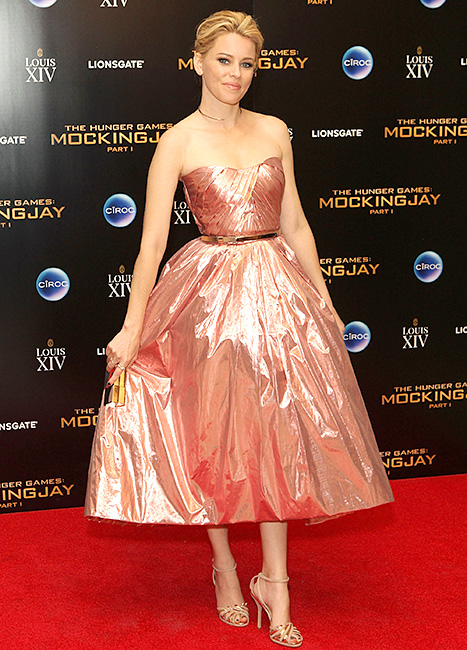 |
| Christian Dior’s New Look, 1947; Elizabeth Banks at the Mockingjay premiere, 2014 | |
The end of the war brought an end to fabric rationing and restored Paris as a fashion capital. One result of this was that fashionable dresses were once again allowed to be softly feminine. Christian Dior’s antithesis to the utilitarian war-time fashions was an hour-glass silhouette with soft shoulders, nipped-in waist and full skirt falling below rather than above the knee. Carmel Snow of Harper’s Bazaar dubbed it “The New Look.” New perhaps to this generation, because it was about 40 years since the previous hour glass silhouettes had been seen. This silhouette would reign throughout the 1950s.
8. The Little Black Dress (LBD)
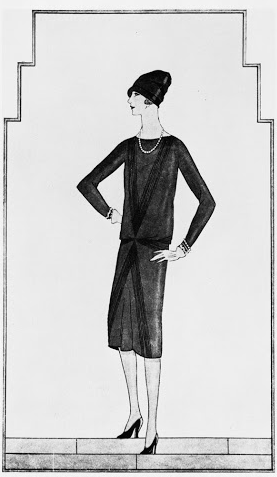 |
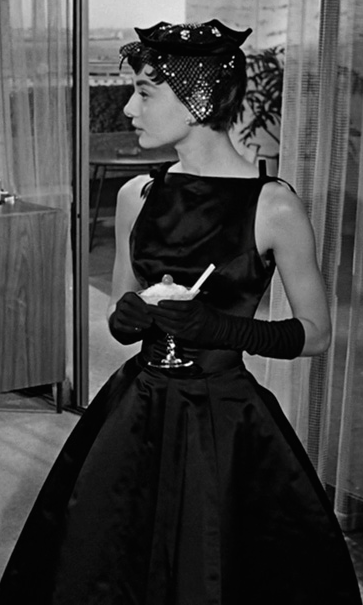 |
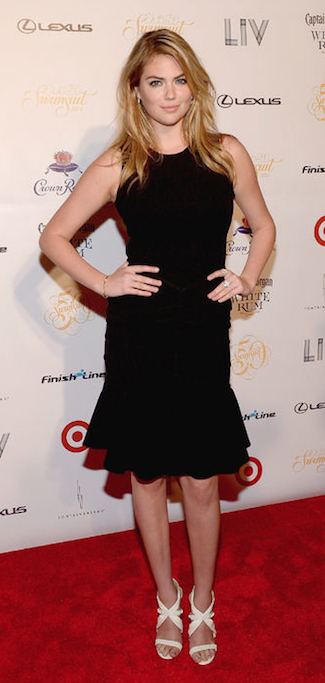 |
| Illustration of Chanel little black dress from Vogue, October 1926; Audrey Hepburn in Sabrina, 1954; Kate Upton, 2014 | ||
Coco Chanel is credited with “inventing” the little black dress, a dress that could transition from day to evening wear, in 1926. It made its debut in the October issue of Vogue that year. This was the first time in fashion history that hemlines rose above the knee so a dress could be considered “little.” The 1950s were the heyday of the LBD, the most popular being the Givenchy dress Audrey Hepburn wore in the movie Sabrina co-staring Humphrey Bogart. Following its release, almost every New York dress manufacturer made a knock-off.
9. The Mini
 |
 |
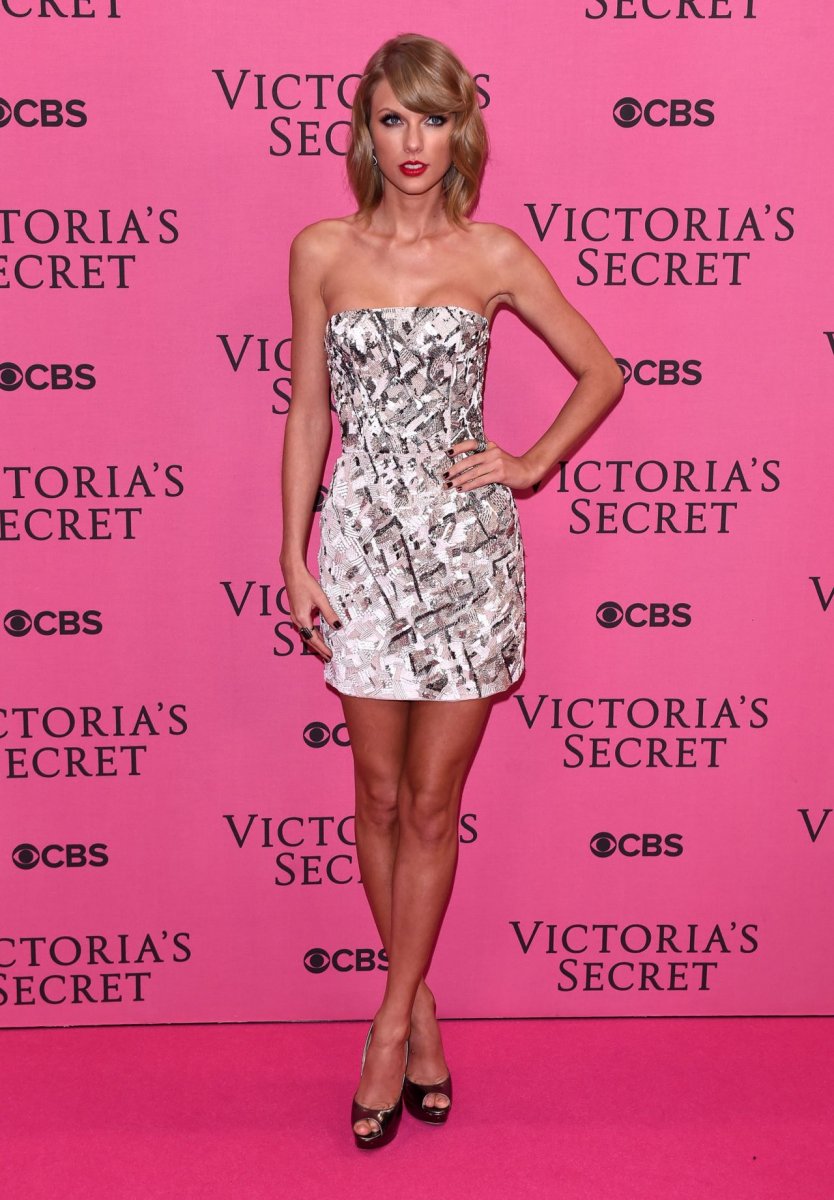 |
| André Courrèges white wool mini dress, 1960s; Claude Montana, 1991; Taylor Swift at the Victoria’s Secret fashion show, 2014 | ||
The miniskirt was first adopted in England in 1965, emerging from London’s Carnaby Street boutiques from lead designers such as Mary Quant. Embraced by the young people around the world, it was a style associated predominantly with youth culture. Two of the more iconic mini looks from the 1960s include the space age designs of Andre Courrèges and the Mondrian-painting-inspired designs of Yves Saint Laurent. The poster child for this new style was Twiggy. Her wide-eyed ingénue appearance would come to characterize the new fashions and youth movement of the decade and beyond.
10. The Wrap
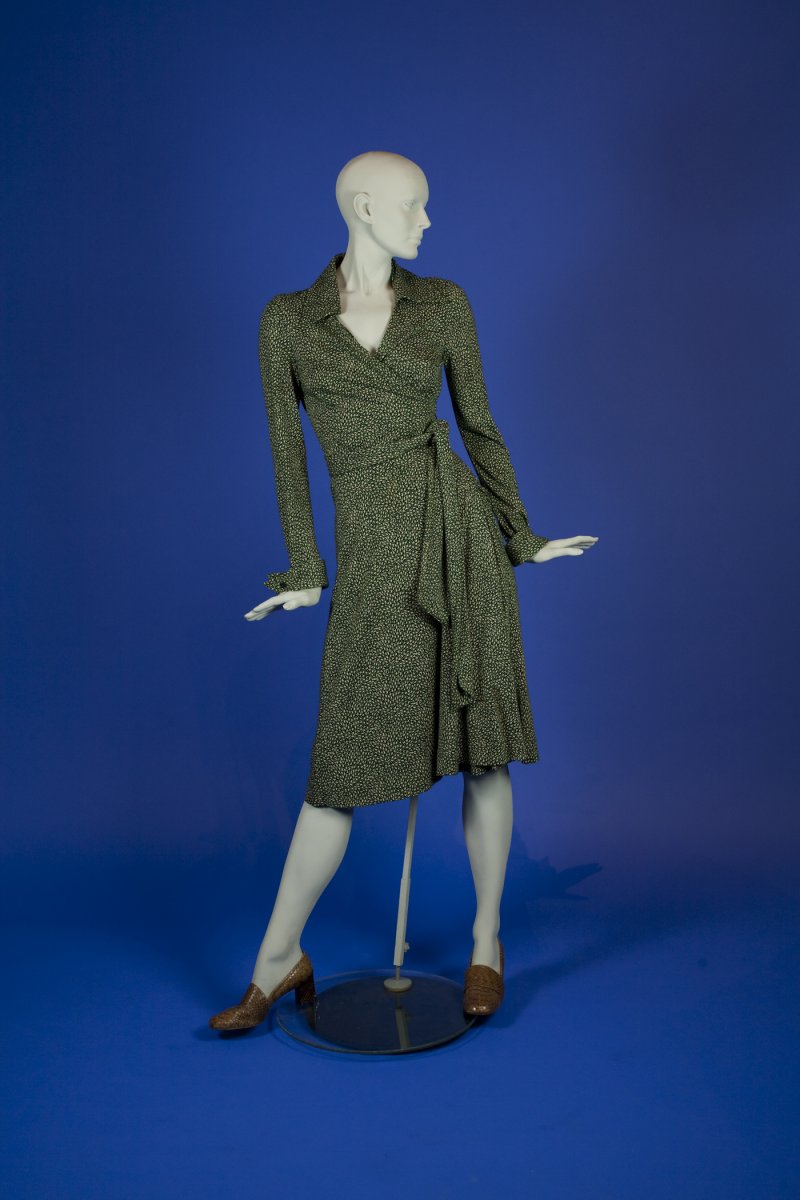 |
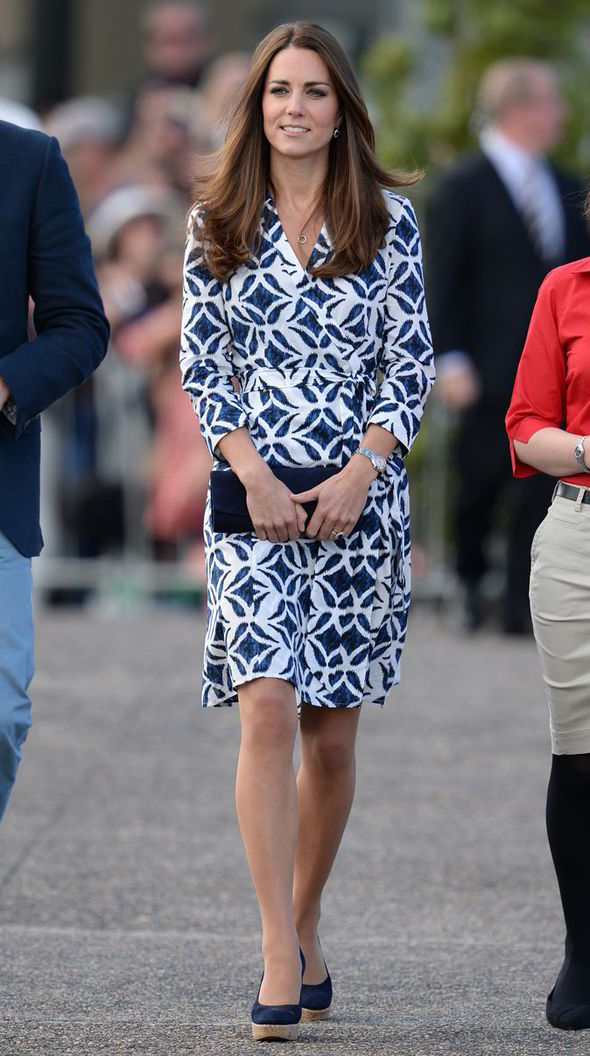 |
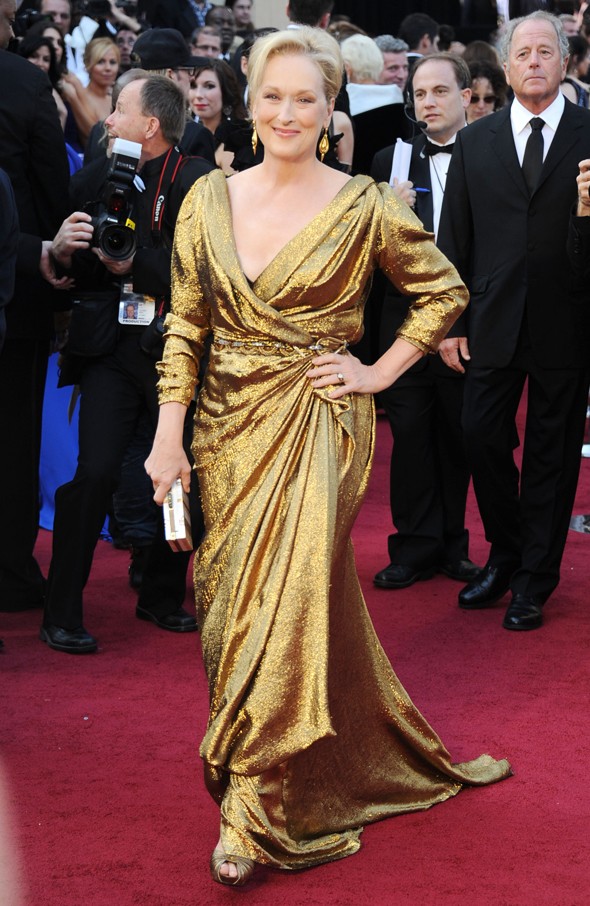 |
| Diane Von Furstenberg wrap dress, 1970s; Kate Middleton, 2014; Meryl Streep at the 2012 Academy Awards | ||
The ease of wrap around clothing is enjoyed by many cultures, but was acceptably worn in public as fashion in the western hemisphere only recently. Diane Von Furstenberg introduced her wrap dress in 1974, and it became one of the most enduring styles of the decade. This classic design flatters many body types and is easy and comfortable to wear. Made from a knit jersey fabric, it reflects fashion’s evolution toward more casual dressing that has brought us fleece and yoga pants. The wrap dress remains popular to this day, particularly Von Furstenberg’s designs, with little alteration from the original.
